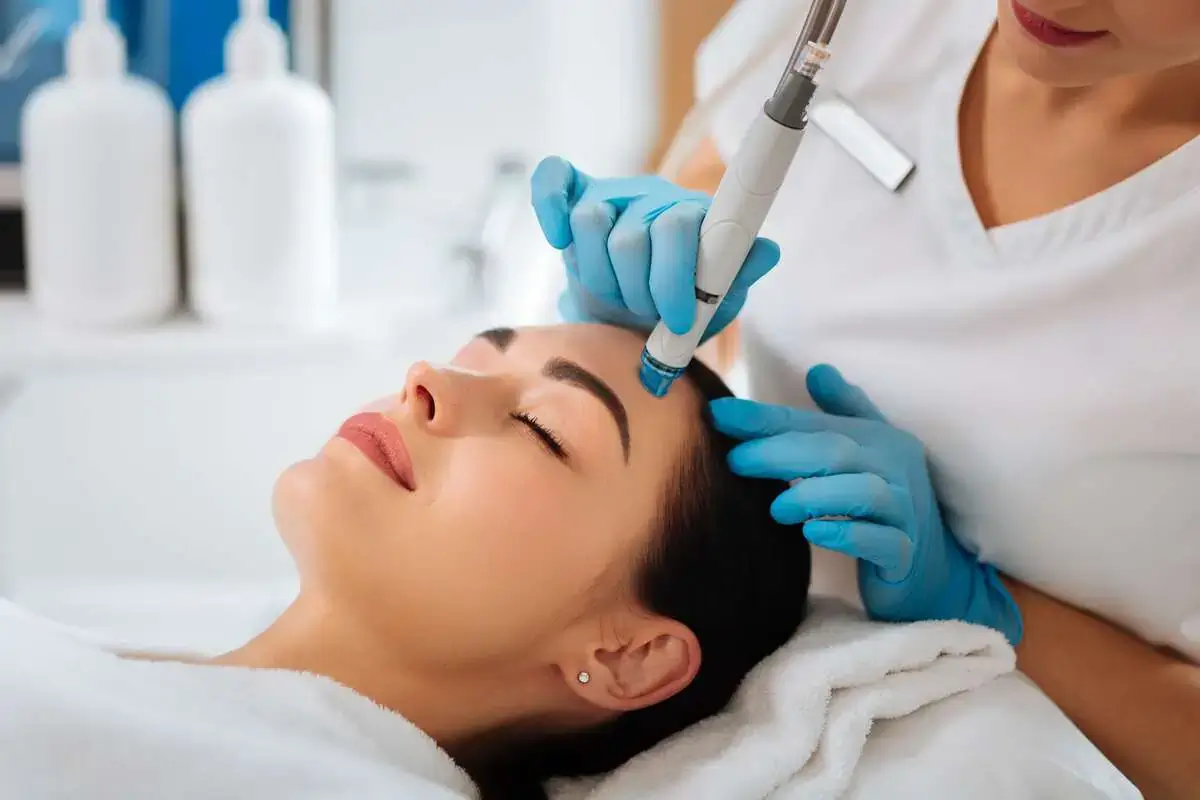In recent years, injectable fillers have gained popularity as a non-surgical cosmetic procedure to enhance facial features and restore a youthful appearance. While these fillers offer temporary results without invasive surgery, some individuals may experience dissatisfaction with the outcome. The question arises: can injectable fillers be removed if you don’t like them?
This article will explore the options for reversing or removing injectable fillers and provide insights into the process.
What are Injectable Fillers?
Also called dermal fillers, injectable fillers are non-surgical cosmetic treatments that enhance and restore facial volume, smooth out wrinkles, and improve the skin’s overall appearance. They are a popular alternative to invasive procedures such as facelifts or implants. Injectable fillers are typically made of various substances, including hyaluronic acid, collagen, and calcium hydroxylapatite.
Hyaluronic acid (HA) is dermal fillers’ most commonly used substance. It is a naturally occurring sugar molecule in the human body, particularly in the skin, joints, and eyes. HA-based fillers are designed to mimic the body’s own HA, making them highly compatible and minimizing the risk of adverse reactions. These fillers work by attracting and retaining water, plumping up the treated area, and reducing the appearance of wrinkles, lines, and sagging skin.
Collagen-based fillers, derived from bovine or human sources, were among the first injectable fillers used for cosmetic purposes. Collagen, a natural protein of the body, provides structure and support to the skin. These fillers replenish the lost collagen due to aging, smoothing out wrinkles and adding volume. However, the popularity of collagen-based fillers has decreased recently due to the introduction of newer, longer-lasting options.
Calcium hydroxylapatite (CaHA) is another type of filler commonly used. It is a mineral-like compound found in bones and is biocompatible. When used in fillers, CaHA particles are suspended in a gel-like solution. They work by stimulating collagen production, providing immediate volume, and promoting long-term improvement by encouraging natural collagen growth in the treated area.
Injectable fillers are typically administered by trained healthcare professionals like dermatologists or plastic surgeons in a clinical setting. Before the procedure, the healthcare provider will evaluate the patient’s facial anatomy, discuss their desired outcomes, and determine the most appropriate filler type and injection technique.
During the injectable filler treatment, the filler is injected into specific face areas using a fine needle or cannula. The procedure is usually well-tolerated, but a topical or local anesthetic may be applied to minimize discomfort. The injection sites are carefully chosen to target wrinkles, folds, hollow areas, or areas that require volume enhancement. Your provider may do some massages over the treated area. This additional step ensures the even distribution of the filler and molds it to achieve the desired result.
The results of injectable fillers are typically visible immediately after the injectable filler treatment, although there may be slight swelling or redness that subsides within a few days. The effects can be around several months to more than a year. This factor will be significantly based on the filler type and the individual’s metabolism. Over time, the filler is naturally broken down and absorbed by the body, necessitating repeat treatments to maintain the desired outcome.
Understanding Injectable Fillers
Injectable fillers are gel-like dermal substances injected beneath the skin to restore volume, fill in wrinkles, and enhance facial contours. Most commonly, filler types include hyaluronic acid (HA) fillers, calcium hydroxylapatite (CaHA) fillers, poly-L-lactic acid (PLLA) fillers, and polymethylmethacrylate (PMMA) fillers. These fillers add volume to specific face areas, improving the appearance of lines, wrinkles, and hollow regions.
Why Would You Want Them Removed?
There can be many reasons why individuals wish to have their injectable fillers removed. Some common concerns include:
- Dissatisfaction with Results: Occasionally, individuals may not achieve the desired outcome after receiving injectable fillers. It could be due to excessive swelling, asymmetry, overcorrection, or an unnatural appearance.
- Allergic Reactions or Complications: Although rare, allergic reactions or complications such as infections, granulomas, or migration of the filler material can occur. These adverse effects may prompt individuals to consider removing the fillers.
- Change in Personal Preferences: Personal preferences and beauty ideals can evolve. Individuals who no longer desire the enhanced features achieved through fillers may choose to have them removed.
Options for Filler Removal
If you’re unhappy with your injectable fillers, there are several options available for their removal or reversal:
- Hyaluronidase: This enzyme can be injected into treated areas to help break down and dissolve hyaluronic acid fillers. This method effectively reverses HA fillers’ effects and is considered a safe and widely used option.
- Time: Many fillers are temporary and will naturally dissolve over time. The duration differs and depends on the type of filler used. For example, HA fillers generally last 6 to 18 months, while CaHA fillers last up to two years. If you’re patient, the fillers gradually dissipate and diminish the effects.
- Surgical Excision: In some cases, surgical excision may be necessary to remove non-biodegradable fillers such as PMMA or silicone. This option is typically reserved for severe issues where other removal methods have been ineffective, or complications have arisen.
- Consultation with a Professional: It is crucial to seek the expertise of qualified and experienced dermatologists or cosmetic surgeons to discuss your concerns and explore the best removal options tailored to your situation. These experts will evaluate your condition and recommend the most suitable approach.
Considerations and Risks
While injectable filler removal procedures can be effective, there are specific considerations and risks to be aware of:
- Recovery Time: Depending on the removal method, you may experience downtime and temporary side effects, such as swelling, bruising, or discomfort. Your healthcare professional will provide post-removal care instructions to ensure a smooth recovery.
- Secondary Procedures: In some cases, the removal process may require additional treatments to correct any remaining asymmetry or restore the natural appearance of the treated area. This factor should be discussed with your healthcare professional during the consultation.
- Individual Variations: The success of injectable filler removal can significantly vary based on factors like the type of filler used, its location, and the individual’s unique physiology. Results may not be guaranteed, and multiple sessions may become necessary to achieve the desired outcome.
Final Takeaways
While injectable fillers offer a convenient and non-surgical solution for facial enhancement, there are instances where individuals may wish to have them removed. Options such as hyaluronidase injections, natural dissipation over time, and surgical excision exist to address these concerns. You must consult qualified professionals to determine the most suitable approach based on individual circumstances. Open communication with your healthcare provider is critical to achieving the desired results and overall satisfaction with any cosmetic procedure.



